How to Orient Your Workpiece with a BobsCNC Router.
If you’ve ever been lost or disoriented, you know how important it is to stop and get your bearings. The article is written to help BobsCNC users understand how to orient the cutting area of the machine with projects they create with their CAD/CAM software.

The basic movement of the router mounted on a CNC is either front to back (X-axis), side to side, (Y-axis) and up and down (Z-axis). The home switch locations determine the orientation. The X home switch location is the furthest back the gantry can move. The distance the Gantry can move toward the front along the X-axis, also called the travel limit, is programmed into the firmware on the controller. The computer will not allow the gantry to exceed this “soft” limit.
The Y-Carriage home switch is located at the farthest right side of the Gantry. The Y Carriage moves side to side on the Y-axis. The distance the Y-Carriage to the right is also programmed as a “soft” limit into the firmware.

The Z carriage has its home switch located at the top of its travel limit. The Z Carriage only moves down and up which defines the Z-axis. The travel limit of the Z-axis is the maximum cutting depth you need to complete a project. This is calculated for you by the computer-aided machining (CAM) software you use to generate your gcode files.
When creating a project remember the orientation of the cutting area. Design your piece so that it is in a landscape rather than a portrait orientation as illustrated below (designed using Vetric Aspire).

Note how the axes are oriented;

Keep this in mind when placing the workpiece on the spoilboard.

If you have any questions please contact us at helpdesk@bobscnc.com.
Unleash Your Creativity with BobsCNC.
.













